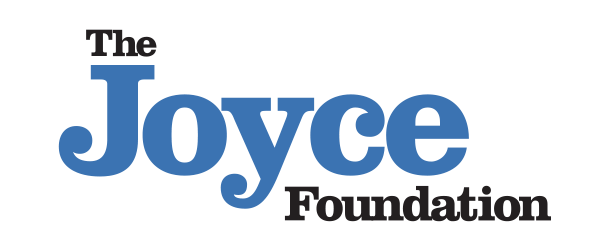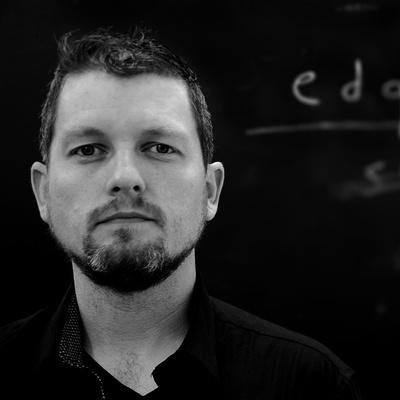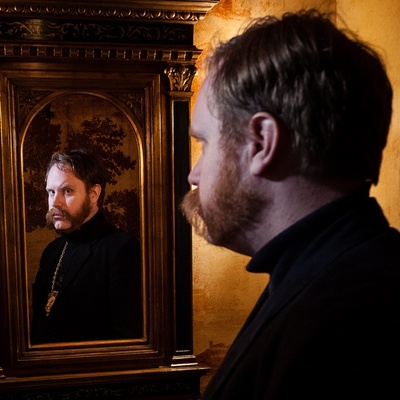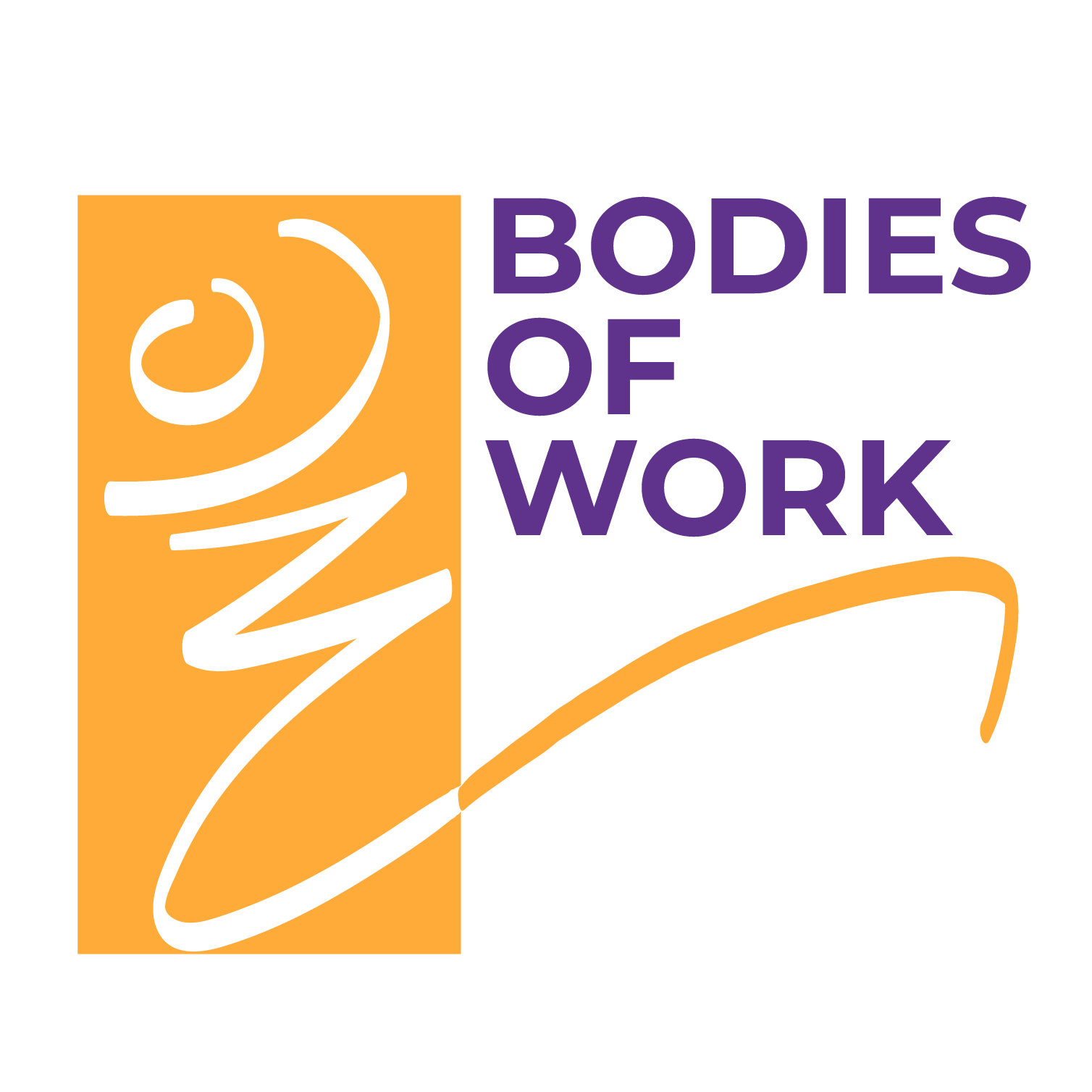On Disability Aesthetics
Summer 2020
Multidisciplinary artists, Matt Bodett, Pooja Pittie, and Andy Slater, in conversation with filmmaker Justin Cooper. They talk about disability aesthetics across mediums and how to mine the golden threads from one's personal experience.
This is a transcript of the closed captions from the video conversation.
Justin Cooper:This series highlights the voices and work of Chicago artists who have participated in the 3Arts Residency Fellowships at UIC. I was able to talk to Matt Bodett, Pooja Pittie, and Andy Slater. Artists who work in widely different mediums yet overlap in regards to disability aesthetics.
Matt Bodett is a visual artist, poet, and performance artist who plays an active role in disability advocacy and utilizing artwork to open dialogue around mental health.
Pooja Pittie is a visual artist who uses time and scale to create abstract paintings.
Andy Slater is a blind sound artist, performer, musician, founder of the Society of Visually Impaired Sound Artists and director of the "Sound As Sight" field recording project.
We discussed their individual artistic practices and experiences of how working within a community can motivate your own voice and power.
Pooja Pittie: Time is what drives me, given that I have a progressive disability this makes it even more like there's a sense of urgency and I always feel like I'm rushing against time there's so much I want to do and create.
Pooja Pittie:There's a lot of giving in to the process so when I'm feeling energetic I usually work on several canvases at the same time. This allows me to use periods of rest like when my body is tired but I still want to create.
In terms of scale, I love experimenting with large format paintings I've made work that's been over six feet tall, over seven feet wide but then I also really enjoy working on very tiny pieces of paper like five by seven inch drawings. The interplay between that and how they feed off of each other is what I've been observing, writing about and thinking about.
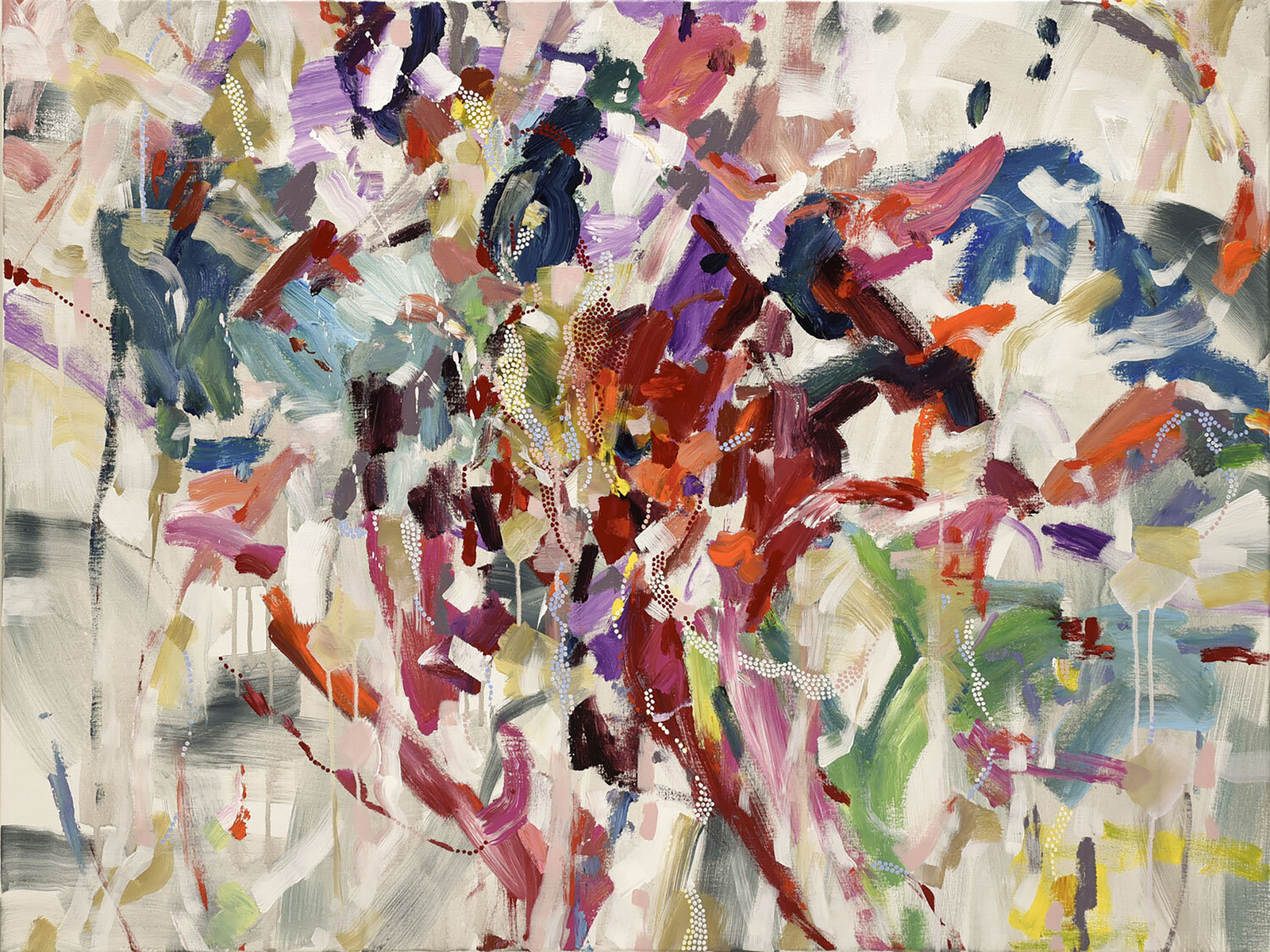 Yes is a World
Yes is a WorldMatt Bodett: my work generally fits around my own lived experiences with schizophrenia. I use work to discuss what those experiences are, to break down stigmas, to encourage conversations and community support. The experience of it encompasses so many realms whether they're auditory hallucinations, visual hallucinations, delusions, and just all the the concepts related to that the performances they'll often be about how do I recreate the experience of an auditory hallucination for someone so we can begin to have a conversation that's not around the assumed stereotypes that are presented by the movie that they just saw about an insane person. I want to recreate that experience that they have a more legitimate or a more realistic version of the experience in order to have some common ground for a real discussion.
I am MadAndy Slater: I work a lot in sound because I can't see very well and I want to work in a medium that I'm comfortable with. I kind of just go overboard and try to do everything I can, like recording environmental sounds or public sounds, creating sounds for a sci-fI video game. I'm bringing this platform now into sort of like a virtual reality or augmented reality project of mine and trying to just figure out ways to take something that is audible and expand it to people who are Deaf or hard of hearing, to an audience who may not necessarily be able to experience it in the way that I usually exhibit it. I like to control my own narrative by making sure that my disability is present in a lot of my work.
Pooja Pittie: Andy, I was listening to the recordings that you've made and some of them are pretty spine tingling to say the least and it was pretty unreal to be transported into this world that you're trying to create with sound.
Andy: That medium gives me the opportunity to do something that can be abstract or fictional or non-fiction and work within a ton of different tangents.
Pooja: I think my paintings are pretty abstract. They're not really based on any preliminary sketches or drawings, hopefully the finished product you can see these layers of movement and stillness existing together in the work.
 Yarn Pencil Drawings
Yarn Pencil DrawingsMatt: Going straight in from what Pooja was just saying,
Matt: schizoaffective, schizophrenia, is such an abstract experience and there's not a language, so I have to find a new language every single time I'm making something. Now that I'm finding it, the exploration of it is continually like finding a vein of gold that runs through the core of the experience.
Matt: And tapping into that every now and then and really harnessing it has become quite extraordinary, it continues to offer things that I felt like the younger version of me desperately needed.
 fear tt
fear ttJustin: What challenges have you faced?
Matt: It's an interesting one because I don't think the challenges that I have faced are related to access in the same way, because it's an invisible disability, the problem and the challenges that I face is when I start talking, and I start talking about being schizophrenic and I have had multiple occasions where arts world professionals say, okay, you can make work about madness but don't talk about it, nobody wants to work with somebody who's crazy. That to me is you, you just ignored everything that I do and you totally devalued even, even me as a person at that moment, that's my challenge, is really confronting normalcy.
Portrait of a PoemPooja: I think, for me, being a painter trying to express my disability experience through my process and not directly tackling the subject it was challenging, on one hand I had feedback of the kind of, well do you really want to talk about the disability, so similar to what Matt was saying earlier, like how can I talk about my process without saying I have a disability because I was like if I'm working with a disability all my work must be about disability. There is no separating the two, I feel like there's no hiding behind our differences.
Sound as SightAndy: There aren't a lot of visually impaired sound artists and a lot of it has to do with accessibility and after decades of trying to record, you know, in the field and use these sounds for my work I can finally do it but there's still a ton of sound and music related technology that just isn't there yet, so I missed out on using all this stuff. So, just being there in the forefront of saying like, hey, I'm a blind dude, I want to work in virtual reality but your program sucks and I can't see it and it doesn't do any of the things that it should do, it's because you guys are lazy programmers. With this stuff becoming more universal, I wanted to just get this moment and work on making more technology, especially creative tools accessible for blind people to create with and use and so I'm just gonna go full on into virtual reality, augmented reality, and all this new tech that is growing as we speak and work to make it accessible, currently where we are with everything being remote, these museum tours are going to be virtual and all of these things, artist talks can go from one end of the world to the next, we can go to a gallery opening where we don't have to worry about uh whether we can get up those stairs or any of that sort of thing.
Justin: Yes, I totally understand that as as a wheelchair user, it's just like, trying to find accessible spaces, especially accessible art spaces, it is a challenge and you know, you wanna check out everything but then you realize, oh well, there's stairs. There, oh there's a ramp, but the ramp doesn't work or there's an elevator, the elevator doesn't work.
Pooja: Very well meaning people saying we'll help you, I'm like, you can't lift this chair it's really heavy and then I'm sitting in it. And my wheelchair clicks and whirs and sometimes even when I'm stationary something in the battery or the movement it just makes these clicking noises and you know there's an artist talk going on or a presentation like okay. I can't just leave the room quietly to go to the restroom, everyone's going to know that.
Justin: That is understandable. What I want to do is transition to your experience in the 3Arts Residency Fellowship at UIC and drawing upon your experience can you talk about how your work relates to disability aesthetics.
Matt: The residency was a very unique turning point for me in relation to disability aesthetics because I don't make Andy's work and I don't make Pooja's work and yet we have a lot in common. When we get down to the discussion of things and to me that disability aesthetic, the way that we use our bodies, the way that we use our experiences in relation to the media choices and the way that we function aesthetically, I didn't know that there was such a rich and diverse community that simultaneously had very different ways of approaching things. In the end it was all about empowering each other, finding ways for the unique voices that we each bring to the table to have a place at the table.
.jpg) 3Arts/Bodies of Work Fellows at a panel discussion
3Arts/Bodies of Work Fellows at a panel discussionAndy: The fellowship at UIC totally radicalized me it wasn't until I was introduced to Bodies of Work where I started doing, creating art about my disability, it was always kind of informed but then I started doing it about my disability.
Andy: I learned so much more about other experiences that are similar to mine, people with disabilities outside of blindness and I realized that I wanted to communicate my work more towards everybody, I wanted to continue to make work for my community and I wanted to do it without any kind of apology. So I started just thinking more and more about how can I put more of this sort of crip attitude into my work and my process has matured and then, I don't know, unmatured, dematured, over the years, it's gone back and forth of being very serious and then kind of being like a snot-nosed punk about stuff and so I do a lot of recording with my cane, interrupting spaces that may be sacred to some people, going and sitting in a quiet space where they like to meditate and then putting my disabled body in there moving around it and that sort of thing and recording it. Not only is it a, you know, an interesting statement to make but it you know it could be a really cool sound to manipulate and work with.
Pooja: I think the activism part of my work probably relates more to how I talk and present my work to make people understand or access that part of the disability community get an insight into our experiences and how enabling and powerful our lives are and they're not based on lack of ability or some deficiency somewhere and I think it's very interesting to be able to communicate that through abstract painting.
Matt: Thinking as Pooja and Andy were talking,
Matt: it seems like we also live in a historic moment where being accepting of one's body and disability in and of itself is activism and there's a beautiful quality to that sort of activism.
Matt: Whether or not it's artistic, whether or not it comes out as an artistic medium. That somehow being accepting of oneself is an activist moment and that is a powerful idea and that is one reason why I feel like this discussion that we've just had today is really like heartwarming and powerful and progressive in what we're doing and eventually I hope it disappears because we shouldn't always have to have this but right now it is a necessary moment and and this discussion is absolutely it is activism, just by being accepting of ourselves.
Justin: I have myself matured over the years. Being surrounded by badass people that are just like doing their own thing and just doing this amazing amazing work and so, yeah, that statement by Andy I think really stands out because I think in one shape or another we have been radicalized, you know, by the disability rights movement I guess, I think that's one of my big takeaways from this session.
The Disability Culture Leadership Initiative and 3Arts/Bodies of Work Residency Program are supported in part by grants from
the Joyce Foundation and the National Endowment for the Arts.
